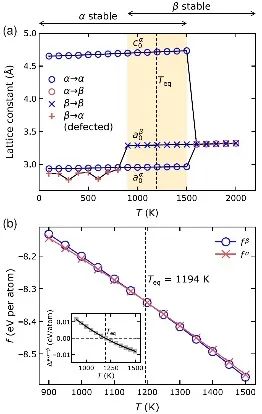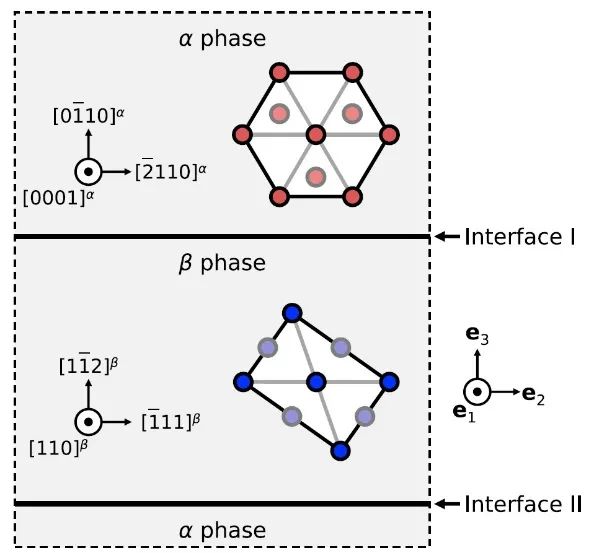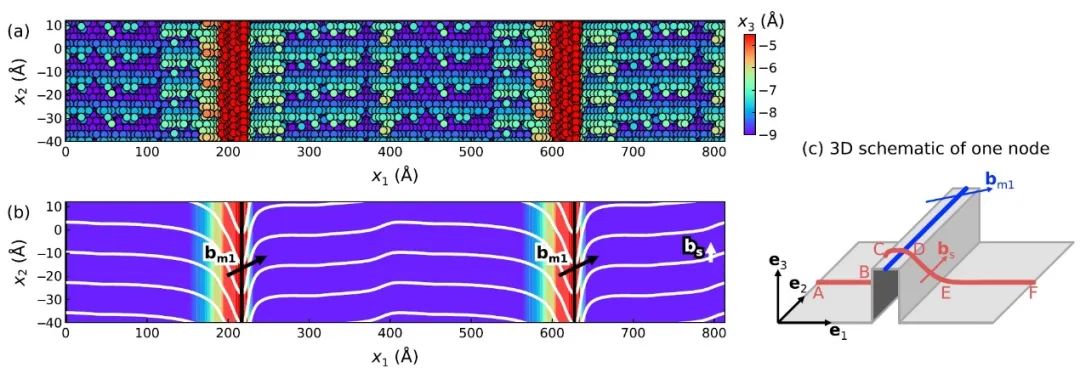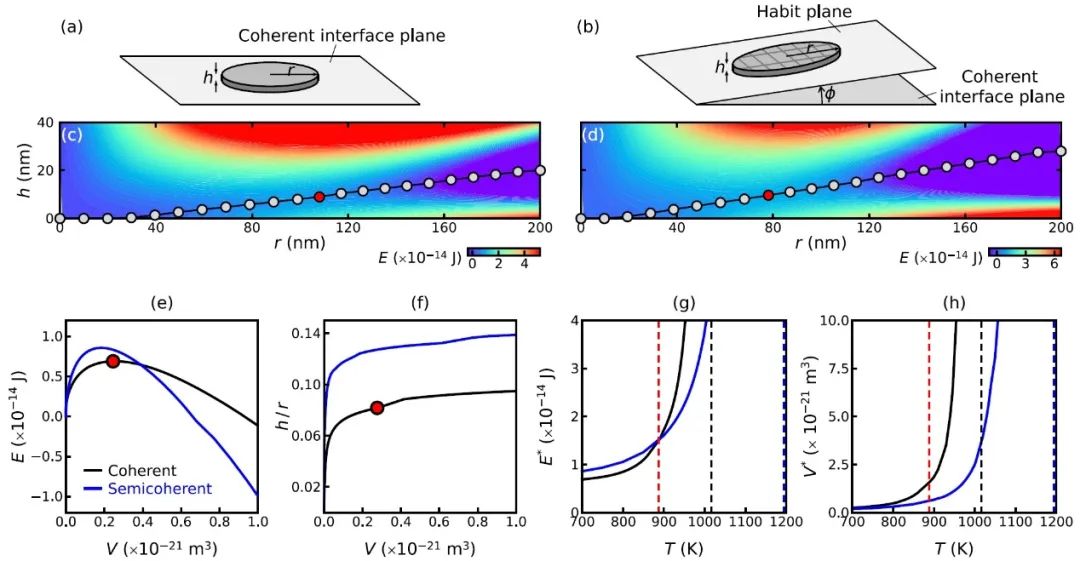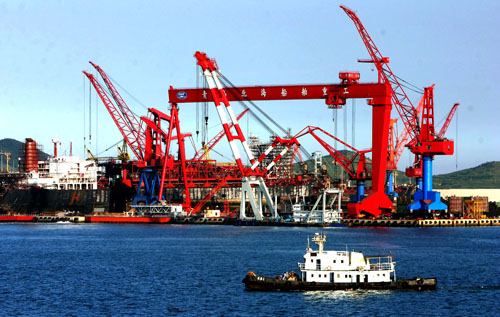鈦合金以其出色的機械性能、低密度和良好的生物兼容性,在過去數十年里備受青睞,廣泛應用于航空航天等行業。這類合金的微觀結構,特別是α相(六方密堆積結構)與β相(體心立方結構)的混合,對其力學表現具有決定性的影響。α/β鈦合金能夠在力學強度、塑性、斷裂韌性與成形性之間達成優異的均衡,這也正是其被廣范使用的根本原因。鈦合金的雙相結構賦予了材料工程師在微觀結構設計上的多樣自由度,以實現目標力學性能的精準調控。
Fig. 1 Temperature dependences of the lattice constants and free energies of bulk α and β phases.
界面能量作為關鍵參數,直接關聯到合金界面的熱力學和動力學性質,決定了界面的形態和演化過程。然而,α/β鈦合金界面能的測定難度大,由于β相在0K不穩定,導致直接使用密度泛函理論(DFT)進行精確計算存在難題。目前的實驗方法,如基于梯階-臺階模型與線性彈性理論的估算,也難以直接測定界面能。幸運的是,最新技術的發展為此難題提供了解決方案:一種是熱力學積分結合絕熱切換自由能計算法,準確且高效;另一種則是利用由DFT數據訓練而成的神經網絡勢能,如深度勢能(DP)神經網絡
Fig. 2 Schematic of the model for simulating coherent α/β interfaces.
由香港城市大學材料科學與工程系的Jian Han教授領導的團隊,采用分子動力學、熱力學積分以及經過密度泛函理論(DFT)訓練的深度學習勢模型,深入探討了鈦材料中α/β界面(即和))的結構和熱力學特性。研究首先集中于分析鈦的相干α/β界面的熱力學性質,并考察其如何受到應變和溫度的影響。隨后,團隊對半相干界面的結構和屬性進行了細致審查,并將這些發現用于理解β基體中α析出相的成核及生長過程,也就是從高溫狀態開始的冷卻過程。
Fig. 3 Semicoherent interface structure.
該論文的關鍵發現包括:(1)成功預測了鈦中最關鍵界面(相干和半相干)的自由能,這是首次以接近DFT精確度進行此類計算(值得注意的是,β相在0K下完全不穩定,因而在沒有人為約束的情況下DFT無法直接計算);(2)模擬結果展示了半相干界面的平衡結構和本質的缺陷結構,這些結構解釋了習慣面的普遍存在;(3)揭示了界面遷移的作用機理,并指出這一機理在不同方向(比如升溫與降溫)會導致界面遷移速率的不同;(4)這些精確的熱力學和結構數據被用于可靠預測α-β相變冷卻過程中析出相的形成。
Fig. 4 Disconnection lines in a semicoherent interface.
此項研究不僅為準確預測界面屬性和運動提供了指導,還為理解和預測包括在低溫下不穩定的相和相干性喪失情況下的析出行為提供了實用的參考。該文近期發表于npj Computational Materials 9:216 (2023),英文標題與摘要如下,點擊左下角“閱讀原文”可以自由獲取論文PDF。
Coherent and semicoherent α/β interfaces in titanium: structure, thermodynamics, migration
Siqi Wang, Tongqi Wen, Jian Han & David J. Srolovitz
The α/β interface is central to the microstructure and mechanical properties of titanium alloys. We investigate the structure, thermodynamics and migration of the coherent and semicoherent Ti α/β interfaces as a function of temperature and misfit strain via molecular dynamics (MD) simulations, thermodynamic integration and an accurate, DFT-trained Deep Potential. The structure of an equilibrium semicoherent interface consists of an array of steps, an array of misfit dislocations, and coherent terraces. Analysis determines the dislocation and step (disconnection) array structure and habit plane. The MD simulations show the detailed interface morphology dictated by intersecting disconnection arrays. The steps are shown to facilitate α/β interface migration, while the misfit dislocations lead to interface drag; the drag mechanism is different depending on the direction of interface migration. These results are used to predict the nature of α phase nucleation on cooling through the α-β phase transition.
免責聲明:本網站所轉載的文字、圖片與視頻資料版權歸原創作者所有,如果涉及侵權,請第一時間聯系本網刪除。

官方微信
《腐蝕與防護網電子期刊》征訂啟事
- 投稿聯系:編輯部
- 電話:010-62316606
- 郵箱:fsfhzy666@163.com
- 腐蝕與防護網官方QQ群:140808414




